




By Zamourad Iqbal News Editor
Pierce faces a $1.2 million shortfall in
Susan Rhi-Kleinert stated that the loss of funding is a significant issue.
“It is detrimental for colleges and universities, especially in California, because we believe in open access and equal opportunities for everyone,”
access to things like tutoring services and often require significant support, especially in community college. Students generally have jobs, many of them have children, and some are older and returning to school. They’re usually not wealthy at all and are on financial aid. If you take away any support services, you’re just going to hurt that population.”
Aguiar also mentioned that Pierce College is seeking
opportunities to collaborate with LAUSD to find better opportunities for dual enrollment for high school students.
“LAUSD and LACCD are attempting to
initiate collaboration and develop pathways for students, something we have long sought to do and have been working on for many years, Aguiar said.” “The opportunity arose for the grant. So, we applied for the grant because the focus of those federal government funds was on programs like dual enrollment. Grant provides us with a little bit of what they call seed money, essentially, to start the program. Once the grant money is gone, we then institutionalize.”
Rhi-Kleinert said that when she looks back and sees the success story of the students who were part of the HSI grant.
“When people say that some may not think it’s worth it, but it’s every bit worth it because when you see that the investment is pennies compared to what they have achieved and what they are doing and giving back.”





6201 Winnetka Ave.
Woodland Hills, CA 91371
Room: Pierce College Village 8211
Phone: (818) 710-4115
Phone: (818) 710-4117
Website: www.theroundupnews.com
Email: newsroom.roundupnews@gmail.com

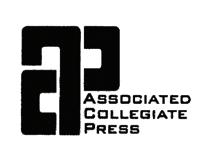

Editor-in-Chief..........Abraham Elizalde
Managing Editor..............Violet Garcia
Photo Editor...................Karla Delgado
Photo Editor................Myraneli Fabian
News Editor.................Zamourad Iqbal
Campus Life Editor.........Emily Garcia
Opinion Editor...........Melanie Somoza
Sports Editor....................David Cohen
Copy Editor................Gerardo Escobar
Online Editor...............Daisy Aguinada
Reporters
Natalie Baharian
Gabriella Carlos
Emileo Carreon
Brianna Fuerte
Ivy Jade Gary
Elizabeth Holodnak
Tim Lewis
Olivia Muñoz
Phoenix Nwadeyi
Chris Rubinstein
Leah Sklarski
Photographers
Josue Aguilar
Damian Celedon
Cherie Clark
Bryce Edwards
Calvin Henry
Melanie Jurado
Sandra Mazas
Andre Montana
Alissa Nguyen
Jesus Rivas
Advisers
Jill Connelly
Jeff Favre
Tracie Savage
Morgan Keith
*For advertising, call: (818) 710-2960
Corrections?
Email us at newsroom.roundupnews@ gmail.com
Scan the QR code below to subscribe to our weekly newsletter

Since January, the United States has seen more than 50 school shootings, with 27 occurring on a college campus, according to CNN. These numbers are more than a statistic, they’re a warning that higher education is not insulated from the epidemic of gun violence.
A 2021 safety assessment conducted by LACCD revealed vulnerabilities. Only three doors at Pierce College have automatic lockdown functions, leaving every other lock dependent on a manual key. Only some classrooms can be locked from the inside, and just three campus buildings are equipped with panic alarms. The campus also lacks a public address system to broadcast emergency alerts. Meanwhile, other
By Zamourad Iqbal News Editor
Every child in any corner of the world at least once dreams of going to America and making their dreams a reality, and I am one of them.
The dream of manifestation really worked for me, although it wasn’t easy. The road to obtaining a student visa is fraught with more extended waiting periods, and applying to schools requires a substantial amount of paperwork.
Even after securing their visa, students are unsure if they can pass through the border and customs. The struggle is not yet over.
Once you land in your dream school, everything feels like spring blooming in full flower at the beginning.
However, homesickness and a constant battle to make sure you are not violating any student visa rules, and most of all, the hate we get being international students from everywhere, is always disheartening to see on social media.
Are they aware of the significant financial burden it costs us, struggling to get through the paperwork, and the obligations of working on the job, as well as the nervewracking process of being qualified for any job?
California colleges have already taken proactive steps. According to the LA Times, UC Davis incorporates active shooter response into student orientation, giving new students basic survival training from day one. Also, Cal State Fullerton holds biennial summer drills to reinforce readiness across its campus community.
These efforts show that with the planning and commitment colleges can build a culture of preparedness.
Assembly Bill 1858, which took effect in January, restricts high-intensity activeshooter drills that have been shown to cause psychological harm. Instead, schools are urged to adopt traumainformed training methods by gun violence prevention organizations.
Pierce, however, hasn’t kept pace. It last performed an active shooter drill in
2023, with only faculty in attendance. They were taught to “Run, Hide, Fight,” a response endorsed by the Department of Homeland Security in the case of an active shooter. Previous training sessions were also attended by faculty, and no students were present.
Everytown For Gun Safety reports that schools reduce their risk of shooting when they combine threat assessment programs, access to mental health and trauma-informed emergency planning.
The University of Virginia threat assessment model demonstrates how colleges can prevent violence before it occurs by identifying and addressing concerning behavior early.
The model has since been adopted by schools nationwide, and it is recognized as an evidence-
based program by the National Registry of Evidence-based Programs and Practices. In 2023, new training was added for colleges and universities.
Pierce should not wait for tragedy to strike. It should establish a formal emergency planning committee that includes administrators, faculty, staff, students and sheriff deputies. It should implement regular traumainformed drills that comply with AB-1858. Most importantly,Pierce should create a threat assessment program modeled on proven national practices.
Pierce cannot ignore the findings of its safety report. Students and staff deserve to know that the college is doing more than the minimum drills or “Run, Hide, Fight” training. The time for Pierce to take a proactive approach to campus safety is now before it becomes another statistic.
However, the only thing that keeps me going is the faith in the power of manifestation and self-belief.
Every day, I live in fear of having my visa revoked, so I must be cautious with every step I take. The weight of being the best in everything becomes overwhelming at times.
“It takes a village to raise a child,” and being a Pierce student has opened the doors for me because of the help and care that I have gotten from the International Student Service office, Abby, Meagan, and Donna.
At the very beginning, when I decided to pursue my education in Pierce. Professor Denise Robb, the first person I always call when I need help, inspires me not to give up on my dreams.
Most of all, the media arts department helped me acquire the skills I needed to be a journalist.
Professor Dustin Atkinson made me believe that anyone can write and boosted my confidence. Additionally, my peer Delilah, whom I always look up to and draw inspiration from, played a significant role.
Lastly, the friendships I made at Pierce play a crucial role in my journey as an international student.
The fight to achieve your dream is an ongoing process, but the best part of being an international student is that
we do not give up and always find ways to thrive in the competitive environment, where it takes courage and grit
to reach the heights of success that inspire us to achieve the American dream.

Otcober 1, 2025

Online learning makes it easy to skip
By Natalie Baharian Reporter

Digital access keeps eduaction within reach
By Chris Rubinstein Reporter

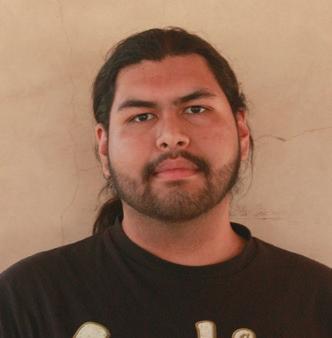
“I fear coming to campus, but I could see how other people would be a little weary to be here, especially after all the shootings and how many shootings the US has in general.”
NikkoloDorado-FilmMajor
Although they have had a presence for years following the COVID-19 pandemic, online classes took off and students requested they remain online so they can be accessed. But, this doesn’t benefit the students.
Though it may sound convenient for professors to do this, it completely takes away the benefits that an actual in-person class would have to offer.
An issue arises with online classes with how the information is processed and digested by each student, watching and participating in an online class is entirely up to them.
The likelihood of retaining information is greatly decreased depending on the student’s home environment, according to a study by the National Library for Medicine. The report also states, “This was accompanied by difficulty to understand
Eversince the COVID-19 pandemic hit schools, online classes, which were previously just a somewhat rare alternative for college courses, have become a more common option for students. Even with this rise in popularity, many professors fail to realize how they can implement one of online learning’s greatest strengths into their in-person classes.
College students have a lot going on in their lives. They have siblings that they need to drop off and pick up. They have jobs that will call them in to cover a shift, or they simply get sick. There is always going to be something happening to at least one student in a professor’s class that makes them miss a lecture or maybe
the content, low engagement with the course material and difficulty to remain engaged when studying at home.”
Considering that a classroom experience is based on live reaction, the lack of students in a classroom not only hinders their academics but also the possibility of inperson interactions.
In-person learning offers a wide variety of opportunities that students don’t necessarily have access to online. One of the most notable being the day-to-day interactions they have with other students as well as their professors.
“As students take multiple classes together and work on group projects, they begin to form community and professional connections beyond the classroom space. These relationships can turn into future networking opportunities,” according to Berry College.
What was once an
even several lectures.
When it comes to occurrences like this, many professors will tell that student to have another student give them their notes. This is a very limiting solution to this problem and needs a change. The oldest method of study that is supposed to be tailored specifically to how you learn as an individual has been taken away from you, and now you have less control over what you learn, how much you learn, and when you get to learn it.
If a professor recorded all of their lectures and posted them to canvas, no one would ever run into this problem. If a student can’t make it to class due to sickness, work or other reasons to miss their lesson,
opportunity for students to quickly ask questions, share ideas, and express their thoughts has now become a passive activity that doesn’t foster intellectual curiosity.
Beyond the lectures and online learning, an entirely remote academic schedule makes it much more difficult to access resources that would otherwise be available.
Many fully remote students miss out on office hours, counseling meetings, and other types of academic help that vary from tutoring services to financial aid.
“No matter what kind of day students have had, on a physical campus, students have more opportunities for faculty, staff or peer mentors to come alongside them because they are embedded in a culture rooting for their success,” said The In-Person Advantage Study at Berry College.
The understanding that
they can watch the lectures and take notes from home.
In a report by the University of New Brunswick, researchers found that 83% of students at the University of Texas looked at a professor’s online lectures to make up for a missed class.
Posting lectures would not only function as a great way to make sure students who missed class are still up to date on the material, but it would also work as a way for students that were in class to double check their notes and further prepare for exams. Further enforcing the ability to read, write, and recite.
According to Sage Journals, researchers found that students had better retention of material when a professor
learning materials are being pre-recorded and prepared discourage students from enrolling in in-person classes. Having a virtually empty classroom ruins the purpose and functionality of them, creating a non-interactive environment for both students and teachers.
“Since the COVID-19 pandemic, rates of chronic absenteeism have nearly doubled across the nation for students in kindergarten through grade 12. Chronic absenteeism has been shown to lead to lower test scores, reduced social and educational interactions, lower rates of high school graduation and increased substance use,” said Economics Professor Evans of Notre Dame University.
Making lectures available seems helpful to students, but it weakens the true intent of college and dwindles down the resources available on every campus.
had added a video going over the topic that they mentioned during class.
In the same study by the University of New Brunswick, researchers also found that 70% of students looked at online lectures to review for exams, 46% looked at them to understand the course better, and 42% looked to add more information to their notes.
There’s a concern that posting recorded lectures would decrease attendance in class, however ACM Digital Library reported, attendance stayed roughly the same.
Posting recorded lectures does not make in-person attendance any less relevant. It simply makes students’ lives easier. Whether they missed class or not.
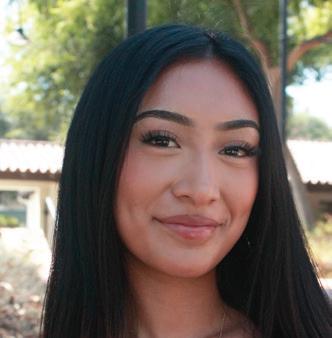
“I don’t fear coming to campus at all. I haven’t seen them promote safety as much as I would like them to, but I genuinely feel safe.”
Gabriela
Hernandez -
Politcal
Science Major

“I don’t fear coming to school. I think it makes me more aware of my surroundings. I think we need to enforce safety and just try our best to be a community.”
AylenaHernandez-IncomingStudent

“I feel like I’m at a point where it seems so normalized. If it happens, it happens. In the back of my head, I think maybe today could be the day or something.”
Alyssa Dorado- Nursing Major
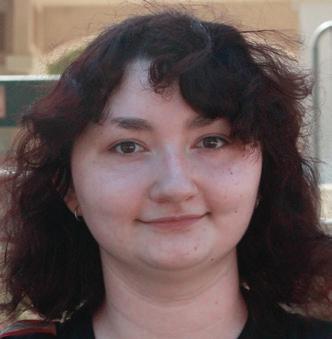
“I do feel safe because the specific shooting that happened recently was a one-off event, so compared to many years of shootings not happening I still feel safe.”
Allen Willard - Nursing Major
By Chris Rubinstein Reporter
Lastweek’s power outage was a cause for concern to the teachers attending the Academic Senate on Monday, Sept. 29 in Building 600.
Preceding the outage talks, Pierce College President Ara Aguiar gave the administration report, which mentioned improvements in overall attendance.
Pierce’s student enrollment is up by 6% and the general class average is up by 7%. This is well for the school as an increase in enrollment will boost the sales inside the school like textbooks, student store and food.
“All in all, I think we’re doing well,” Aguiar said.
Aguiar then proceeded to talk about the power outage on Thursday at 6:30 p.m.
The outage affected copper wires throughout campus, causing Wi-Fi, elevators and some air conditioners to shut down. Additionally, 200 phone lines went down at the same time.
Class was still held for the remainder of the day, but all 8 a.m. classes were cancelled as
the Los Angeles Department of Water and Power tried to get the power back on.
“I can’t say what kind of storm all of these things caused,” Agiuar said. “I appreciate the fact that everyone was so understanding. Communication could’ve been better, but I was in touch with the sheriff and the chancellor.”
After speaking about the power outage, Academic Affairs Senator Wendy Bass spoke about other options for proctoring software that the district is looking into to potentially replace YuJa Verity.
Bass attended a meeting regarding the new features that YuJa had to offer and mentioned that it can now proctor third-party programs. The software can also put a lockdown on phones.
This feature has been implemented due to concerns regarding the use of Google lens, a feature on both computers and phones that can answer anything you take a picture of.
In the event that a student gets an emergency call from a parent or trusted guardian, the proctoring software will unlock the phone and pause the exam.
Professors will have YuJa Verity through June 2027, so the district has until then to decide whether they will switch to another proctoring software afterward.
“We don’t know if it’ll be the one that’s chosen again or not, but there are a lot of features that I think a lot of people want to bear out,” Bass said.
Later in the meeting, Curriculum Chair and Second Vice President Phyllis Braxton spoke about Common Course Numbering (CCN) and the upcoming templates that are going to be made for Phases 2A and 2B.
CCN requires that all community colleges in the state of California have the same names and curriculum for all classes so that it is clear what classes transfer to fouryear universities.
Fall 2025 was the first semester that CCN was implemented into classes. Six courses were chosen, including Introduction to Public Speaking, Academic Reading and Writing, Critical Thinking and Writing, American Government and Politics, Introduction to Psychology, and Introduction to Statistics.
The third phase of CCN
updates is currently under review, and the district is surveying faculty members from impacted disciplines, including accounting, commmunication studies, political science, psychology and sociology.
Braxton said to the senate that everyone had done what was asked of them so far, and that the main problems stemmed from a lack of support from the state, the chancellor’s office and some of the UCs.
“We really need them to support this state legislation that says that we have to create these courses,” Braxton said. “And when we tell faculty, ‘Adjust your courses in this way so that they’re the same’ and reject one of our courses. That’s a problem.”
Despite the issues with CCN, Braxton says that implementing the standard is worth the trouble.
“I think the intent is great that students don’t have to keep repeating the same course over and over again because the counselor thought it transferred and then it didn’t,” Braxton said.“So we’re trying to prevent that.”
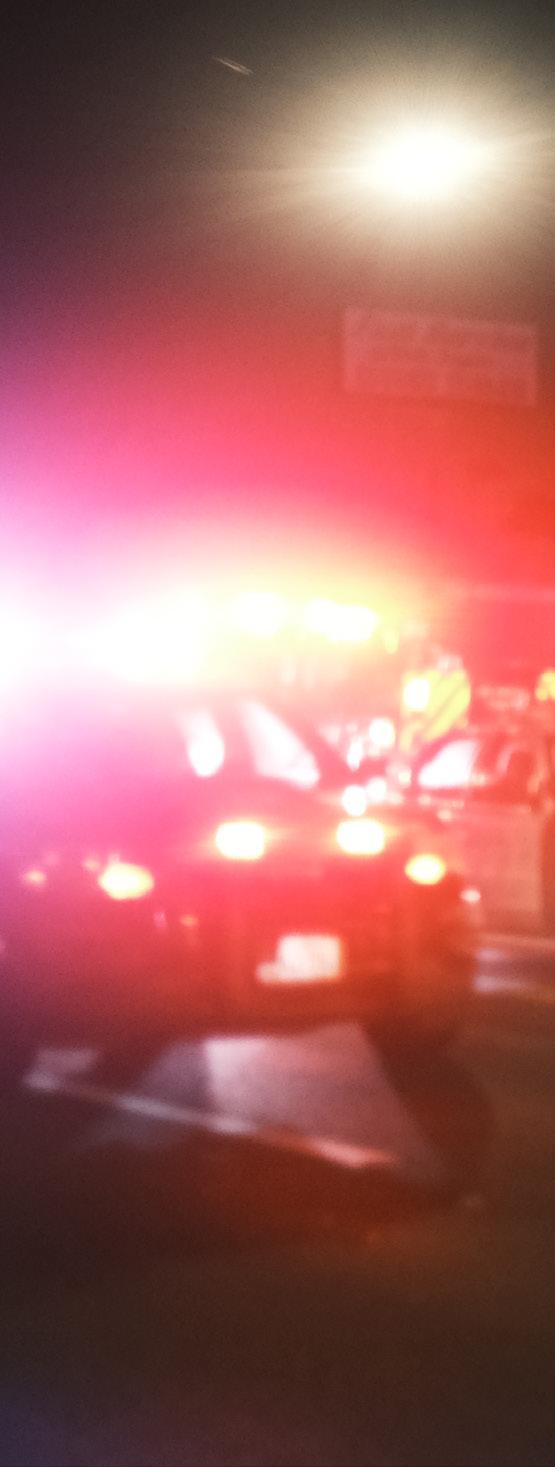
By Olivia Muñoz Reporter
updates for the new Academic East and West buildings, conversation around guidelines for generative AI in classrooms and supporting sustainability efforts on campus were just a few of the topics discussed during the Pierce College Council (PCC) meeting on Thursday, Sept. 25.
Dean of Academic Affairs
Mary Anne Gavarra-Oh, taking the place of President Ara Aguiar, reviewed the recent Los Angeles Community College District (LACCD) enrollment report as the first item on the meeting’s agenda.
“Enrollment-wise, we’re at 103% and District-wise it’s 105%, so we’re still lagging in enrollment,” Gavarra-Oh said. “But we are at the same number of sections that we offered last year.”
Gavarra-Oh added that Academic Affairs is currently creating more class sections to meet enrollment demand.
“We are still trying to add

a few more classes that are in demand in Academic Affairs. Just a few to keep up, and to get our numbers up.”
Construction on the Academic East and West buildings, as well as the Industrial Technology Building (ITB), is continuing at a steady pace. Project manager Soufiane Boudiaf updated the progress on both buildings as well as the construction of the ITB.
“The next project I want to talk about is Academic
East,” Boudiaf said. “We believe that we’re going to finish before time as well, but we’re crossing our fingers. I learned something about construction—never say it’s done until it’s done.”
The insulation for Academic East is currently being installed, along with the air conditioning and piping. The last of the concrete for the roof deck of Academic West has been poured, and the scaffolding around the building has been
commenced, set to finish before winter. The foundation and footing for the ITB are still under construction, and the building’s footprint is at 90% completion.
Academic Senate President Margarita Pillado discussed the Accessibility Capability Maturity Model (ACMM), a program designed to enhance the accessibility of Pierce College’s website and affiliated websites, ultimately making online applications easier to navigate.
Associate Vice President of Administrative Services Ron Paquette discussed installing permanent way-finding signage on campus, which aims to improve Pierce’s accessibility, as well as plans to renovate the cross-country course and build a new soccer field.
Paquette discussed the need for a district policy on AI, citing confusion among administrative staff and students as a reason for implementing such a policy.
Distance Education Coordinator Wendy Bass highlighted the growing need for a district policy on
generative AI.
“I am doing the online teaching training right now, and I’d say 90% of the faculty are using it to create their content pages,” Bass said. “So we have to be really careful about being so hypocritical that we’re saying, you can’t use it, even though job employers are going to expect you to know how to use it responsibly.”
The Technology Committee is seeking a new co-chair, as current co-chair Sean McDonald’s term comes to an end.
Associate Student Organization (ASO) President Emma Ortega cited a rise in chartered clubs from 24 to 35. Plant Based Treaty representative Paige Parsons Roache discussed possible sustainability reforms for campus dining and education at Pierce. A sustainability master plan was also brought up for the campus by Brian Gendron, focusing on unifying the district and Pierce in their sustainability efforts.
The next PCC meeting will be on Thursday, Oct. 28, and is accessible on Zoom.
October 1, 2025
By Elizabeth Holodnak Reporter
TheMulticultural Center had tables lined up with tissue paper in multiple colors, ready for students to fold, cut and transform into papel picado banners.
Students gathered in the center on Sept. 21 to celebrate Latin Heritage Month by learning about the colorful Mexican folk art of cut tissue paper banners. The event gave participants the chance to create their own designs while exploring the cultural meaning and history of this tradition.
Multicultural Coordinator Tatevik Melkumyan taught students step-by-step how to make the delicate patterns that are commonly seen at celebrations throughout Mexico and beyond. Melkumyan shared why she organized the workshop.
“Papel picado is something everybody sees everywhere,” Malkumyan said. “Sometimes people think it’s just decoration, like streamers for parties. But because it has such a cultural meaning and significance, we wanted to highlight that as part of our Latin Heritage Month events.”
The history of Papel Picado dates back to the 18th century.
Its earliest roots come from Aztecs, who used the bark of mulberry and wild fig trees to make a rough paper called Amati, which they decorated for flags and banners.
Centuries later, Spanish influence introduced tissue paper to Mexico and artisans began creating elaborate paper designs for religious festivals. Over time, these transformed into the colorful banners that remain a fixture of cultural celebrations today.
Papel picado is most closely associated with Dia de los Muertos. The delicate banners represent the element of wind and the fragility of life. As they flutter in the breeze, they are said to signal the presence of returning loved ones.
Political science major Raya Gayton attended the event and reflected on the meaning behind the tradition.
“I found out that it represented the wind, like the spirits flowing through it,” Gayton said. “I thought that was really beautiful, to acknowledge the ancestors in that way there is also no wrong way to do it, you just cut and express yourself. Each design is different, like a fingerprint and I thought that was pretty too.”
Mechanical engineering major Sheena Loughran

explained that she came to the event because she saw it as an opportunity to connect to her roots.
“I wanted to come because this is a part of my culture,” Loughran said. “Making Papel Picado and learning the history behind it made me feel
closer to my family traditions. It was a reminder that even simple things like cutting paper into designs can carry so much meaning.”
Students shared their handmade banners with each other, each one unique, and tied together by the shared
experience. The event was a chance to honor and celebrate Latin culture on campus. Students’ artwork will be hung up in the Multicultural center to share with everyone for Latin Heritage Month.
By Brianna Fuerte Reporter
Keller, a musician and the founder of the Artist Brain Collective, an organization that aims to give support to musicians who are neurodivergent, held a seminar about mental health for musicians at Tuesday’s Associated Student Organization (ASO) concert. These events were created as a way to bring the community together by expanding people’s artistic and musical practices and experiences.
At the start of Keller’s seminar, he explained his dislike for the word “neurodiversity.” He explained that when someone is labeled with ADHD or Asperger’s, they’re automatically seen as “broken.” He later clarifies that these labels shouldn’t define a person, especially when most people also carry similar traits.
“I always felt like ‘OMG what’s wrong with me’ then I finally realized, there’s nothing wrong with me,” Keller said, “I’m perfect just the way I am; we’re all just
normal, good people.”
Halfway through the seminar , Keller had attendees pair up with someone they did not know and had them stare into each other’s eyes for 60 seconds. A few minutes later, a large circle was created on the stage, where clapping, drums and shakers were all brought in for the group to create music with each other.
Keller explained the reason for doing this was to be able to get a human connection with each other through music.
“I saw the difference it made when you have that interaction with people,” Keller said.
“This was what I always wanted to fix, and the whole idea of working together and having this contact with each other was very, very important to me.”
The goal of Keller’s seminar was to bring the audience together , but also explain to the audience that there’s nothing wrong with them, whether they’re labeled as neurodivergent or not.
He wanted the audience to understand that they were all human.
This concert was organized

by ASO Concert Director Professor Kevin Good, who also discussed why he arranged Keller’s lecture.
“His presentation hits home for a lot of students,” Professor Good said. “I wanted to
bring someone to speak to a variety of students who don’t necessarily get coverage as much.”
Theater major AJ Fennell shared how the seminar resonated with them.
“I feel like some of the parts that did resonate with me were very general reminders of things that we always kind of talk about, but we don’t really internalize,” Fennell said.
By Ivy Jade Garry Reporter
College’s parking lot was packed on Sunday Sept. 28 due to the Topanga Vintage Market. The event supports the work of local artists, makers and vendors to sell clothes, food and paintings.
The market is held on the fourth Sunday of every month in Parking Lot 7 from 7 a.m. to 2 p.m. Vendors throughout California travel to be a part of the market and sell their vintage or handmade goods.
Market vendor Heidi Perez travels from Highland Park to be a part of the Topanga Vintage Market every month. She has had a booth at the market for almost four years. Perez shared why she prefers to sell at Topanga’s Market.
“I try to sell at the Rose Bowl Flea and Pasadena City College Markets but this is my favorite flea. The people are just so nice,” Perez said.“I’ve been doing this since 1996. It was really hard in the beginning because I had little kids but, I’ve raised 6 kids and a grandson off of this.”
First-time seller Diane Owens travelled from Joshua Tree to sell her jewelry.
“I’ve been selling vintage forever,” Owens said. “Some
of it I make and a lot of it is vintage. I source from flea markets, swap meets and garage sales.”
Local vendor Jack Kalayjian has been selling at the market since before it was held at Pierce. Kalayjian says he’s looking to sell the overflow of their personal collections.
“Most of my stuff is my collection that I’m looking to clean out,” Kalayjian said. “I have too many Garfield’s, but I’m keeping those.”
Market seller Deedee
Gordon has sold at her booth for the past 8 years, she sells handcrafted laced clothing and vintage doilies. Gordon said she enjoys the freedom of working at her own pace.
“Being able to work and create when and what you want to do,” Gordon said. “That’s the beauty of it, you picture something in your head and bring it to life.”
Vintage jewelry, clothes and furniture are not the only items found at Topanga Vintage Market. Food trucks are stationed inside and fill the air with the smell of coffee, burgers, and pupusas. Speakers played music and live artists such as Lunoi Mitani, a violinist who plays every month for tips.
The next market will be on Sunday Oct. 26 from 7 a.m. to 2 p.m. in Parking Lot 7.


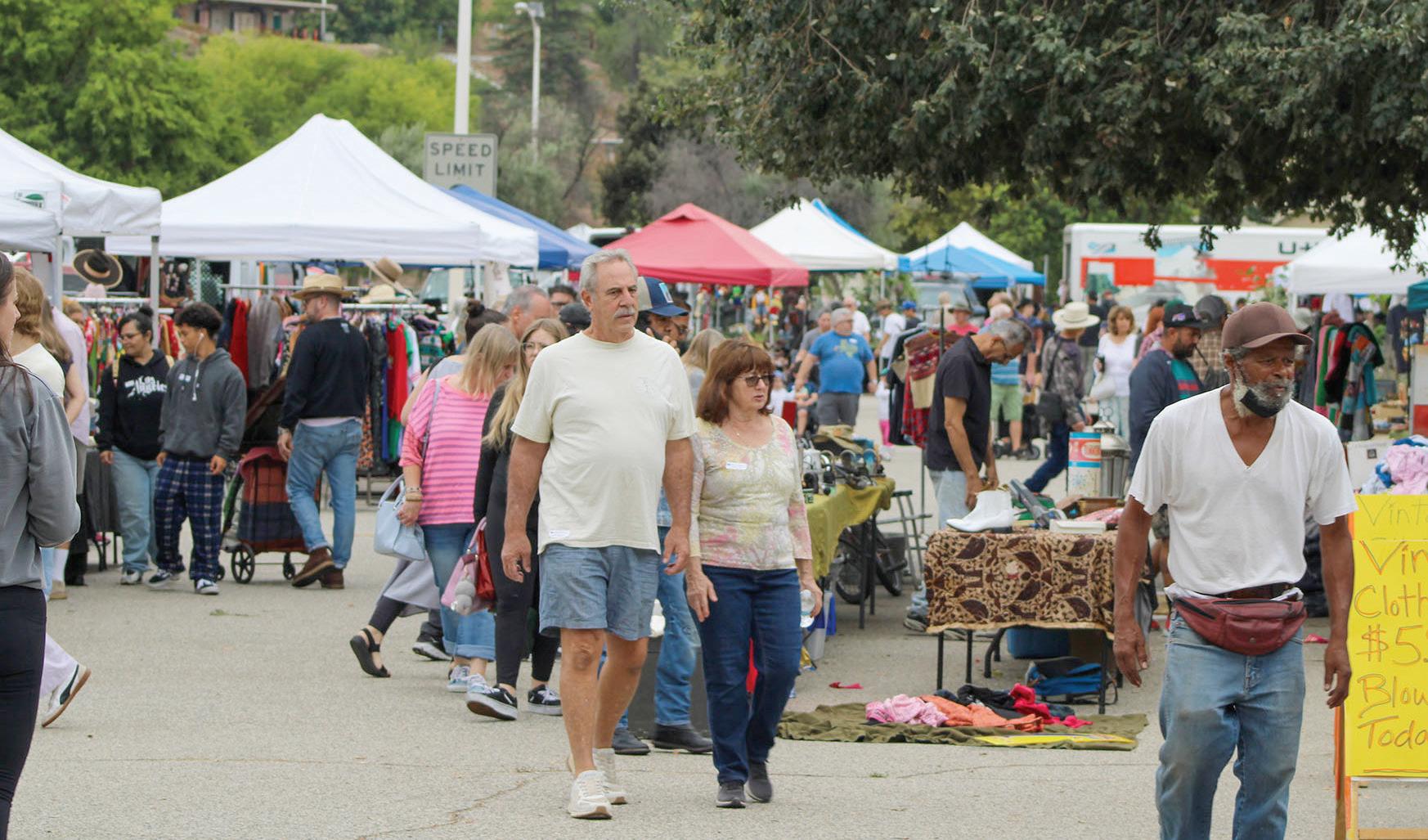

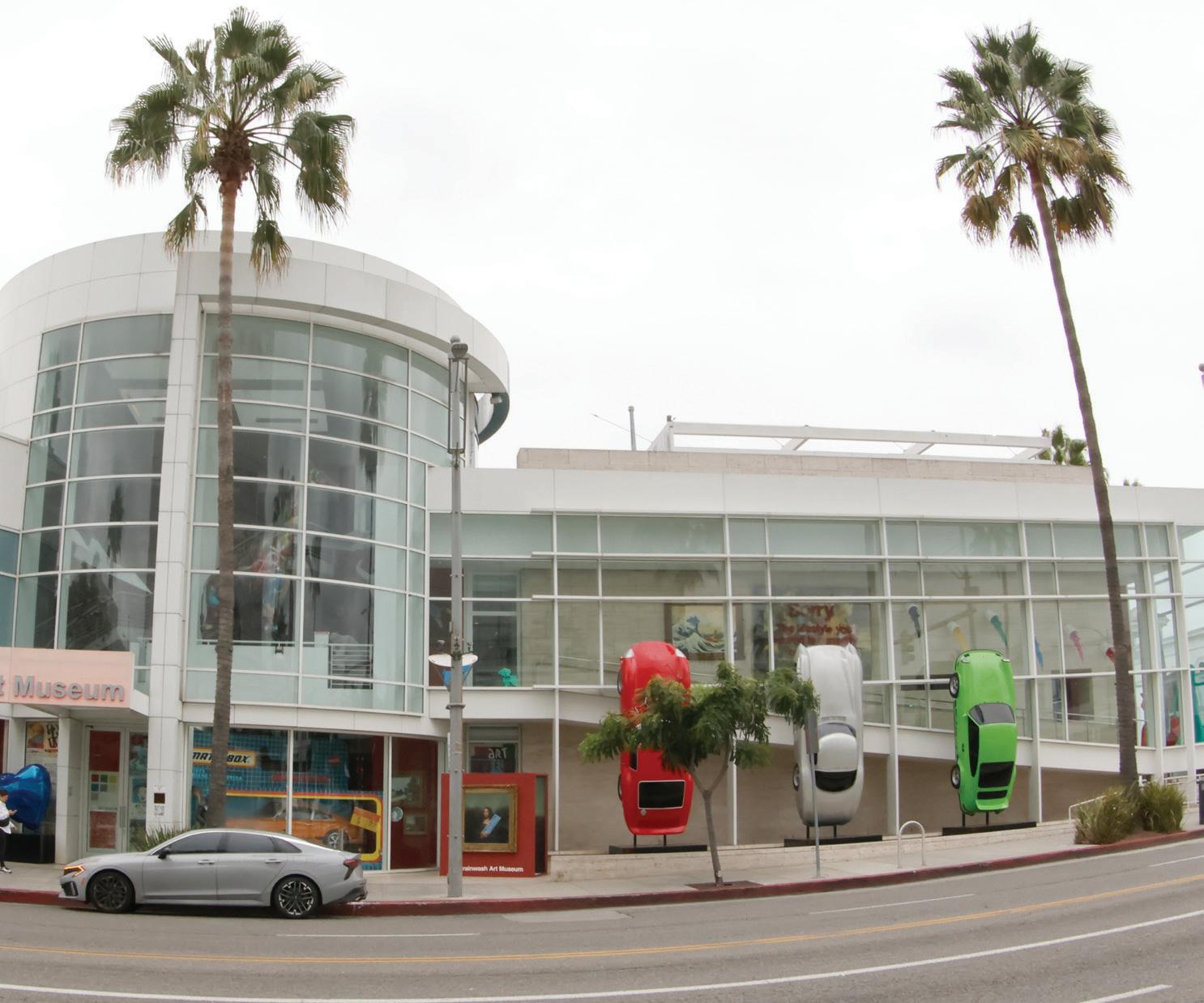


Nearly a dozen Pierce College students took a field trip to the Mr. Brainwash Art Museum in Beverly Hills, Calif., last week to explore interactive art installations. The museum highlights how photographer Thierry Guetta, a.k.a. Mr. Brainwash, became a street artist. Legendary street artist Banksy said Guetta is a “force of nature” and a “phenomenon,” even if he doesn’t “mean that in a good way.”
By Leah Sklarski Reporter
The Pierce College women’s volleyball team battled against a challenging Moorpark team who are ranked No.10 in the state, but ultimately were left defeated in their battle. The Brahmas lost 3-1.
The first two sets showcased great athleticism and strategy from Moorpark college therefore creating a tough battle for the Brahmas. As Moorpark accumulated many points, the Brahmas became aware of their well-coordinated attacks therefore coming together as a team and having each other’s backs was of utmost importance.
From the outset of the game, the Brahmas struggled with one of the biggest blocks they had seen all year long thus creating a need for change in strategy according the Brahma head coach Joseph Arechiga
“I think the biggest thing we kind of practiced yesterday and throughout the week was talking about our team’s identity and how we want to play and how we want to be known to play,” Arechiga said. “So we kind of rebounded back into our culture and set a baseline of what we
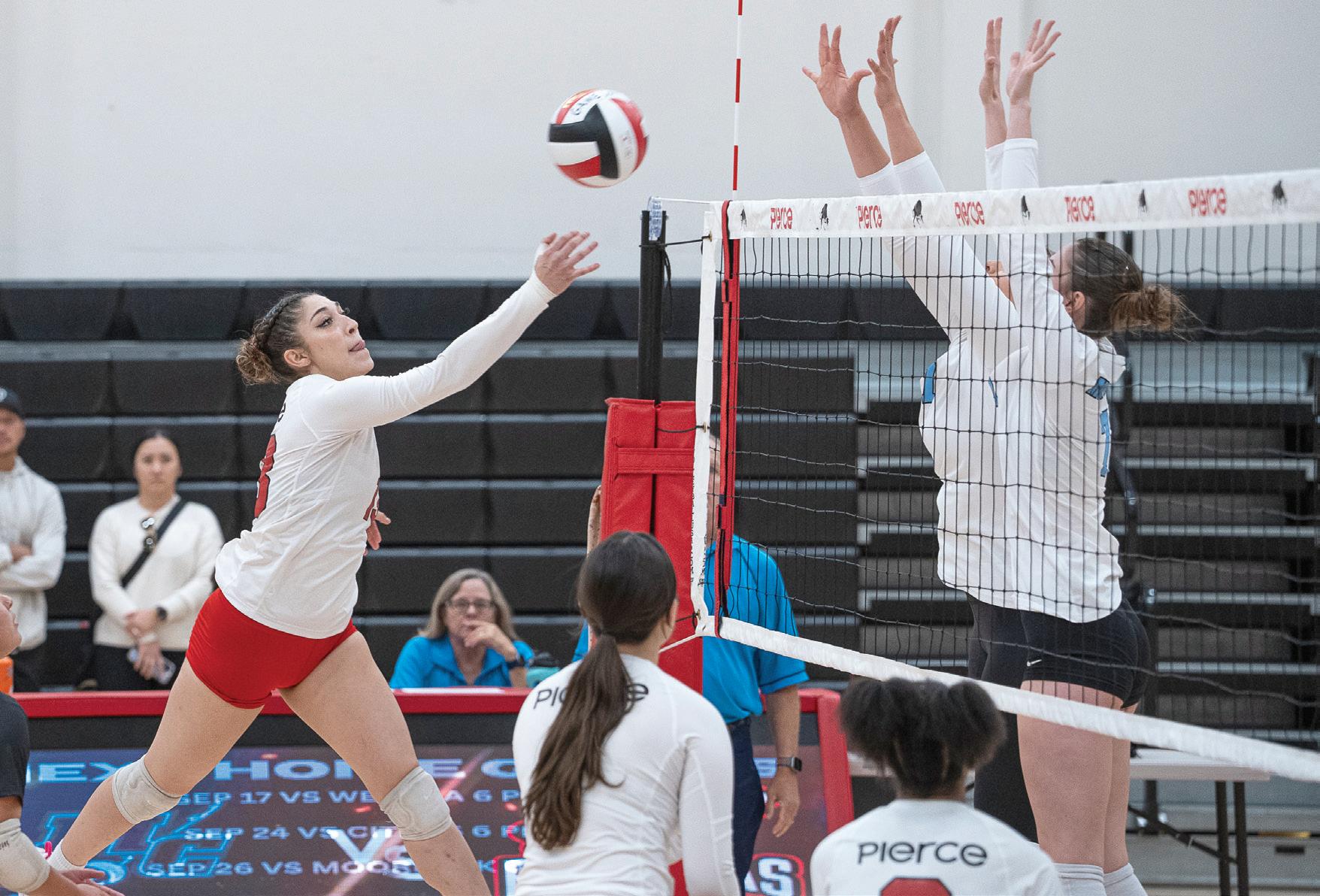
expect and go.”
Moorpark started off strong winning the first two sets against the Brahmas and it was not until the third where the Brahmas
turned around against the Moorpark Raiders and stole the third set with a score of 25-20. With strong dedication and great defense, Pierce was gaining point
after point. This was a turning point in the game and reminded the Brahmas that they can fight and that they can fight hard, according to defensive specialist
Hannah Hernandez.
“Knowing that we were able to fight and go against a really hard team as well as winning a set will really bring up our confidence as a team moving forward.” Hernandez said.
Another challenge that the Brahmas faced during the game was competing against Moorpark’s middle blocker Genessa Johnson as she is one of the best defenders in the state. It was the first time for the Brahmas to really see a team run their offence so strongly and fiercely through that middle as opposed to going outside or to go in opposites.
Communication is key for the
and is the turning point to their morale and mindset, according to defensive specialist Giselle Loza
“I think for me to talk more and be more communicative with the team will really help and to just know that we got each other and to keep a positive mindset even when we feel defeated.” Loza said.
As the Brahmas look forward to their next match against Allan Hancock on Friday October 3rd, the team will remain focused on their culture and most importantly to keep their head in the game.
By Tim Lewis Reporter
The Pierce College football team ends up on the wrong side of a landslide win for the Antelope Valley College Marauders on Saturday Sept. 27. Antelope Valley won 61-7.
Antelope Valley started the game off strong with scoring two touchdowns in just the first quarter. On top of scoring with ease against the Brahmas, their overwhelming defense also proved to be a challenge for Pierce, but this did not stifle the team’s morale.
Plays were made by both quarterback Roman Rough and defensive back Antonio Jimenez who, respectively, ran the ball from the pocket 30 yards himself and intercepted a pass from Antelope Valley.
Head Coach James Sims praised his team for the fight they have all season, even with the injuries they have suffered.
“We’ve been injury-ridden all season long, but you know I’m proud of them,” Sims said. “They fought to the end. They could have quit and walked off the field but they played till the end of the game. So I’m proud of them.”
By the second quarter, Antelope Valley scored a total of four times against the Brahamas, with one touchdown resulting from an interception, leaving the score by halftime to 40-0
Rough thanks his patience through football and believes that the Brahmas would have won more games if it weren’t for injuries.
“A lot of injuries are absolutely killing us,” Rough said. “I think you guys would see a different scoreboard if most of our team wasn’t injured. God has shown me patience through football though and you just got to be patient and live to see.”.
The third quarter shows the Brahmas tenacity as they fought valiantly to defend against the Antelope Valley defense, resulting in only one touchdown being scored by the Marauders, leading the Brahamas into the fourth quarter with a score of 470.
Offensive coordinator Irving Booker shared how this team’s positive and player-focused program drove him to continue his coaching career.
“Juco football is a springboard to the rest of their future and so that’s something that is instilled here and that’s why I’m here working,” Booker said.“I was gonna stop coaching, but I was
inspired to come back and be around a program that cares about the kids.”
It wasn’t however a complete blowout as Pierce College opened the quarter with a touchdown by wide receiver Brandon Woods officially putting Pierce College on the scoreboard
Woods shared how he thought he and the team fared against the Marauders and shared his optimism for the remainder of the season.
“I’m disappointed you know I’m glad I got on the board, but I was shooting for three today,” Woods said. “Our team we have the play makers we have you know the guys with the abilities we just need to you know get on more of a serious note during the week and we’ll be good.”
This victory was short celebrated though as Antelope Valley ran the ball into the endzone during the kick return resulting in another touchdown for the Marauders, which was also followed up with another touchdown by the team within the final five minutes of the game bringing the final score to 61-7
The Brahmas next home game is scheduled for October 9 at 6pm at Shepard Stadium.
